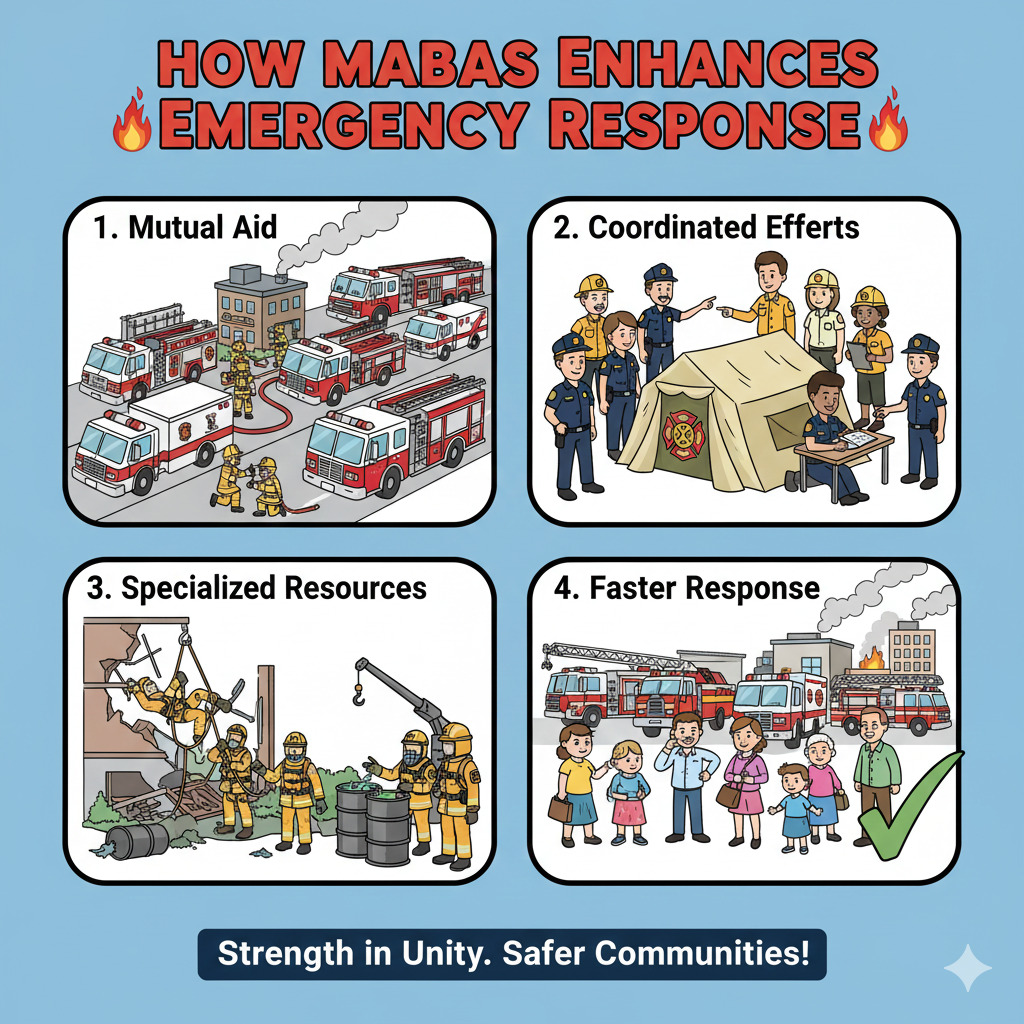
Curious about Mabas and how it operates? Well, I’ve got you covered. Mabas, short for Mutual Aid Box Alarm System, is a vital resource in the world of emergency services. It’s a collaborative system that enables neighboring fire departments to come together and assist each other during large-scale incidents.
So, how does Mabas work its magic? Simply put, when a fire department needs additional resources beyond its capacity, they can request assistance through the Mabas system. This request triggers a coordinated response from nearby departments, ensuring that the necessary help arrives promptly and efficiently. Stay tuned as I delve deeper into the inner workings of Mabas and its significance in emergency response strategies.
Key Takeaways
- Mabas, short for Mutual Aid Box Alarm System, facilitates mutual support among neighboring fire departments during large-scale incidents.
- Operating on the principle of mutual aid, Mabas streamlines resource deployment, fostering unity and collective responsibility among fire departments.
- Mabas functions as a standardized system, enhancing coordination and efficiency in emergency response efforts by establishing clear protocols and communication channels.
- The Functionality of Mabas involves organized divisions, resource allocation optimization, incident command system adherence, coordinated communication, regular training, and technological integration.
- The Importance of Mabas in Emergency Response lies in its ability to streamline communication, optimize resources, and promote a collaborative approach for swift and effective responses during emergencies.
What is Mabas?
Mabas, standing for Mutual Aid Box Alarm System, is a vital resource in the realm of emergency services. It serves as a collaborative system that facilitates mutual support among neighboring fire departments during large-scale incidents. When a fire department is faced with a situation that exceeds its available resources, Mabas enables them to request assistance from nearby departments. This prompts a coordinated response, ensuring that help arrives in a timely and efficient manner.
Operating on the principle of mutual aid, Mabas embodies the spirit of cooperation and solidarity among emergency response teams. It streamlines the process of requesting and providing resources during emergencies, fostering a sense of unity and collective responsibility among fire departments. By pooling together their capabilities and expertise, Mabas participants can effectively tackle challenging situations that might overwhelm individual departments.
Mabas functions as a standardized system that simplifies the complexities of resource deployment during crises. By establishing clear protocols and communication channels, it enhances coordination and efficiency in emergency response efforts. This standardized approach not only optimizes resource allocation but also promotes interoperability among different fire departments, enabling seamless collaboration when faced with large-scale incidents.
The Functionality of Mabas
As I dive deeper into Mabas, it becomes evident that its functionality is key to understanding how this system operates. Here are some key points to grasp:
- Organization: Mabas organizes fire departments into divisions, ensuring a structured approach to emergency response.
- Resource Allocation: By categorizing resources based on types and levels, Mabas optimizes the allocation process for maximum efficiency.
- Incident Command System: Mabas follows the incident command system, designating clear roles and responsibilities to different units during operations.
- Coordinated Communication: One of the pillars of Mabas is its emphasis on coordinated communication, enabling seamless information sharing among multiple agencies.
- Training and Exercises: Regular training sessions and exercises are conducted to familiarize all involved parties with Mabas procedures, enhancing preparedness for real-life scenarios.
- Technological Integration: Leveraging technology plays a vital role in Mabas operations, aiding in real-time data sharing and decision-making processes.
Mabas functions as a well-oiled machine, with each component working in harmony to ensure swift and effective responses during emergencies.
The Importance of Mabas in Emergency Response
During emergencies, every second counts, and having a well-organized system like Mabas in place can make all the difference. Mabas plays a crucial role in enhancing emergency response by ensuring rapid and efficient assistance to those in need. It acts as a lifeline in chaotic situations, providing a structured framework for coordinated action.
- Streamlined Communication: Mabas promotes effective communication among all involved parties, ensuring that vital information is relayed promptly and accurately. This seamless flow of communication is essential for making informed decisions and executing swift response strategies.
- Resource Optimization: By allocating resources based on the nature and scale of each incident, Mabas ensures that emergency units are utilized efficiently. This strategic resource management helps in maximizing response capabilities and addressing crises effectively.
- Collaborative Approach: Mabas fosters a collaborative culture where emergency response organizations work together as a cohesive unit. This team-based approach allows for better coordination and synergy among different agencies, leading to quicker and more effective responses.
In essence, Mabas plays a vital role in enhancing emergency preparedness and response effectiveness by streamlining communication, optimizing resources, and fostering collaboration among various stakeholders.
Conclusion
Mabas plays a crucial role in emergency response by facilitating swift and coordinated actions among response agencies. Its focus on communication, resource optimization, and collaboration enhances the efficiency of emergency operations. By fostering effective teamwork and strategic resource management, Mabas significantly improves preparedness and response outcomes in crisis situations. As a vital component of emergency services, Mabas stands as a key factor in ensuring the safety and well-being of individuals during challenging times.
Frequently Asked Questions
What is the significance of Mabas in emergency response?
Mabas plays a crucial role in providing rapid and efficient assistance during crises by ensuring streamlined communication, optimal resource allocation, and fostering collaboration among emergency response organizations.
How does Mabas enhance emergency preparedness and response effectiveness?
By promoting effective communication, strategic resource management, and teamwork, Mabas strengthens emergency preparedness and response effectiveness, serving as a lifeline in chaotic situations.
